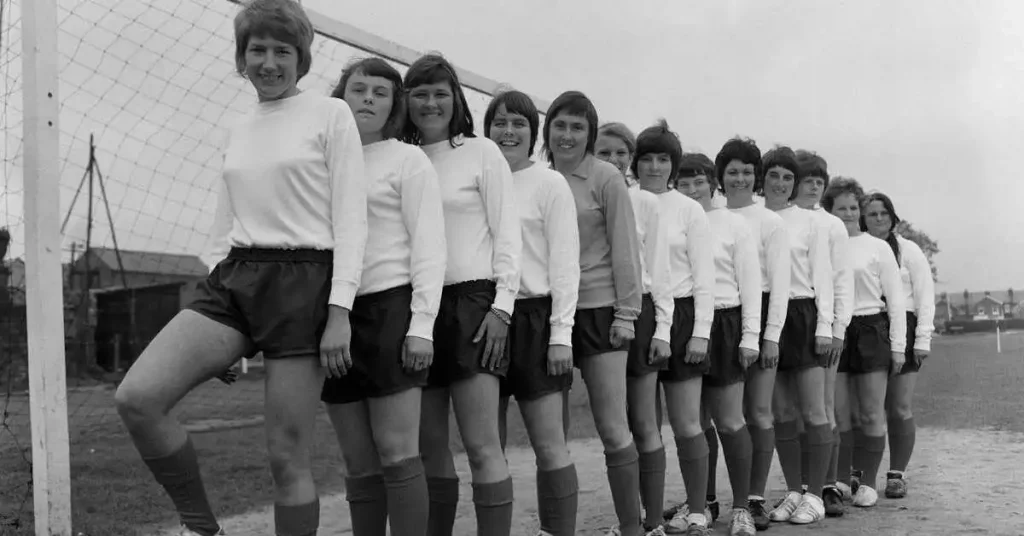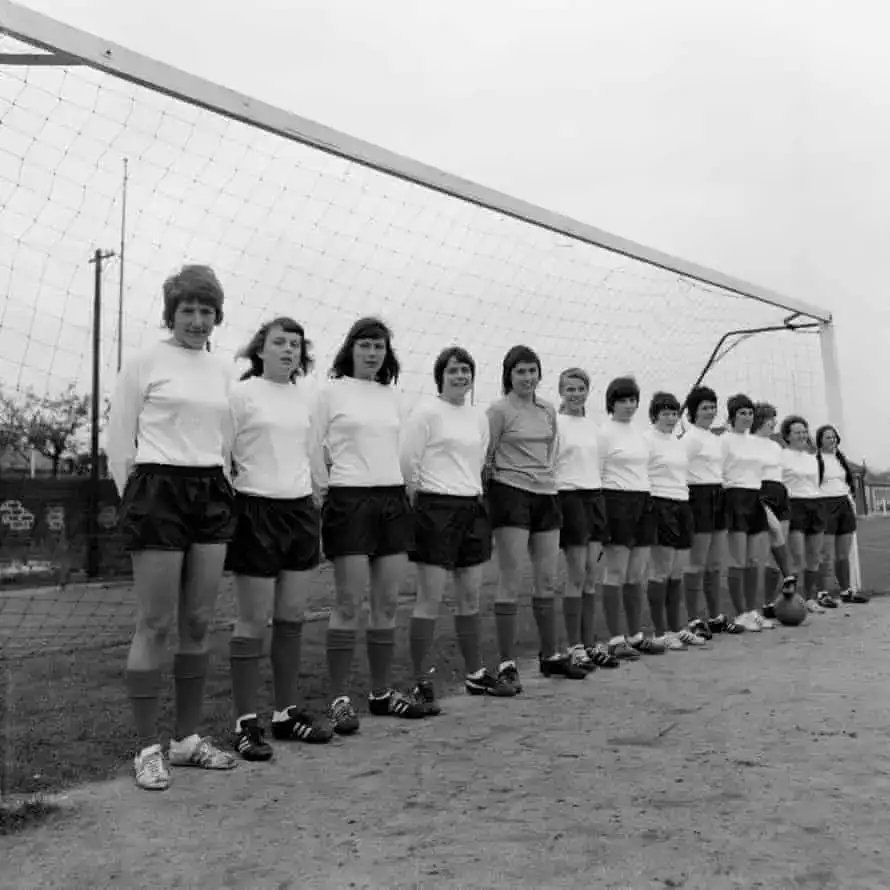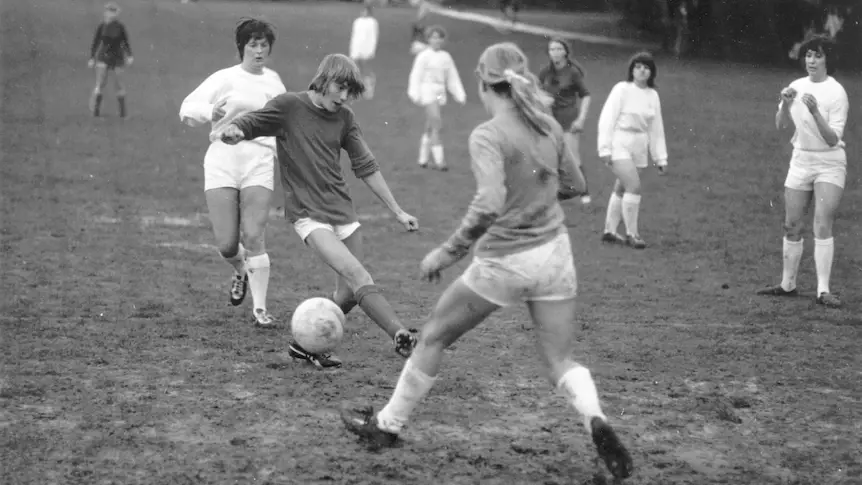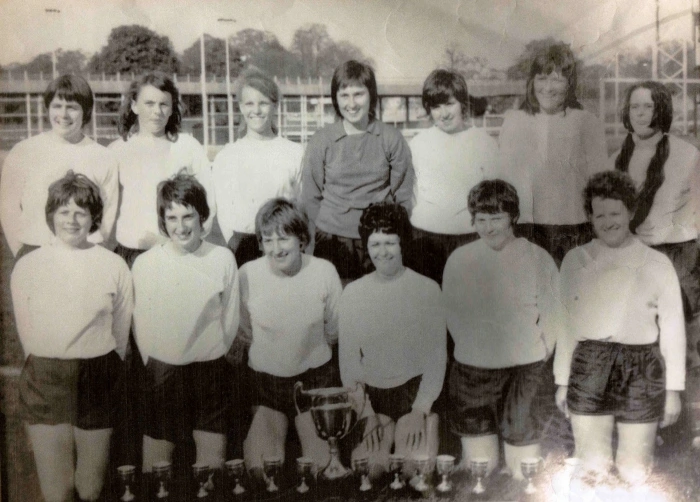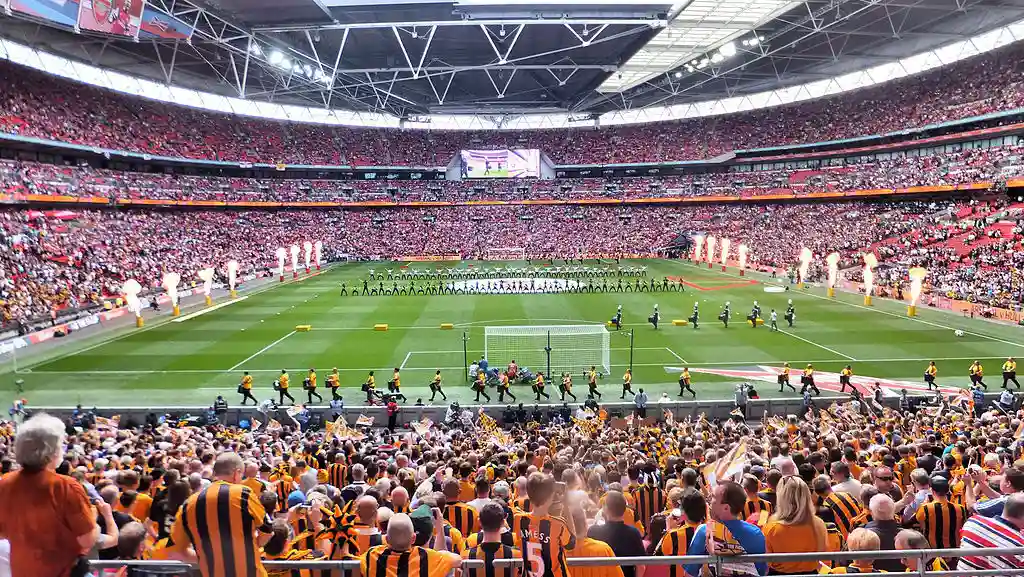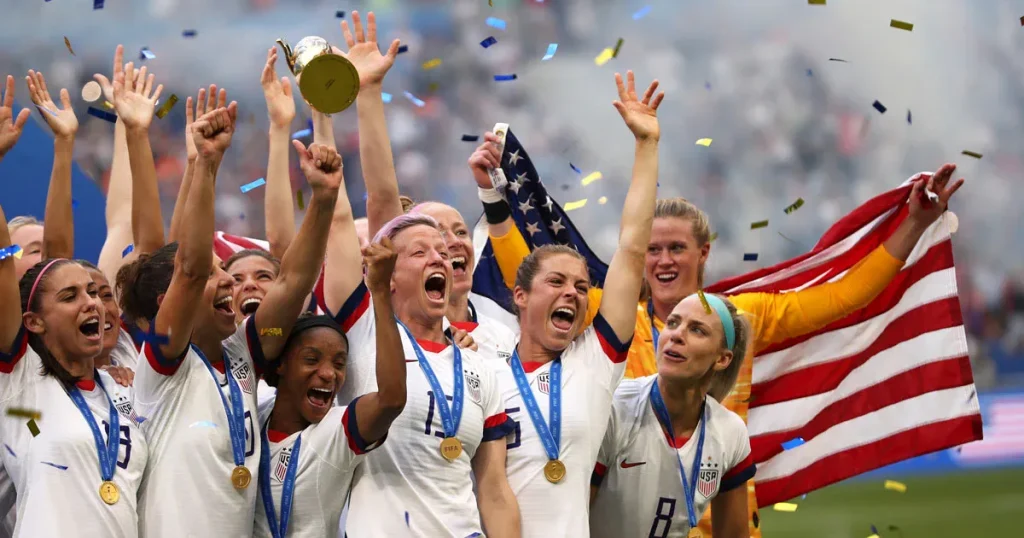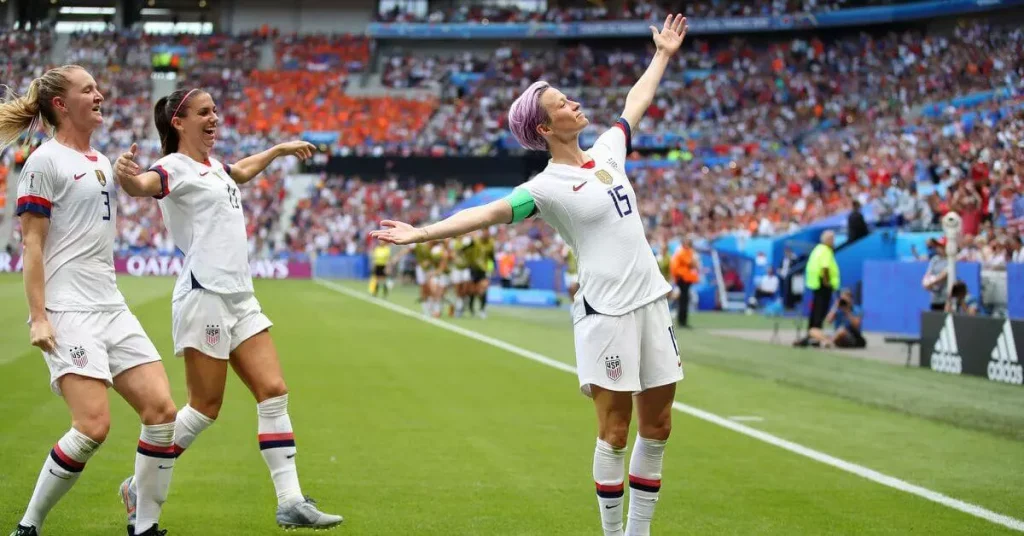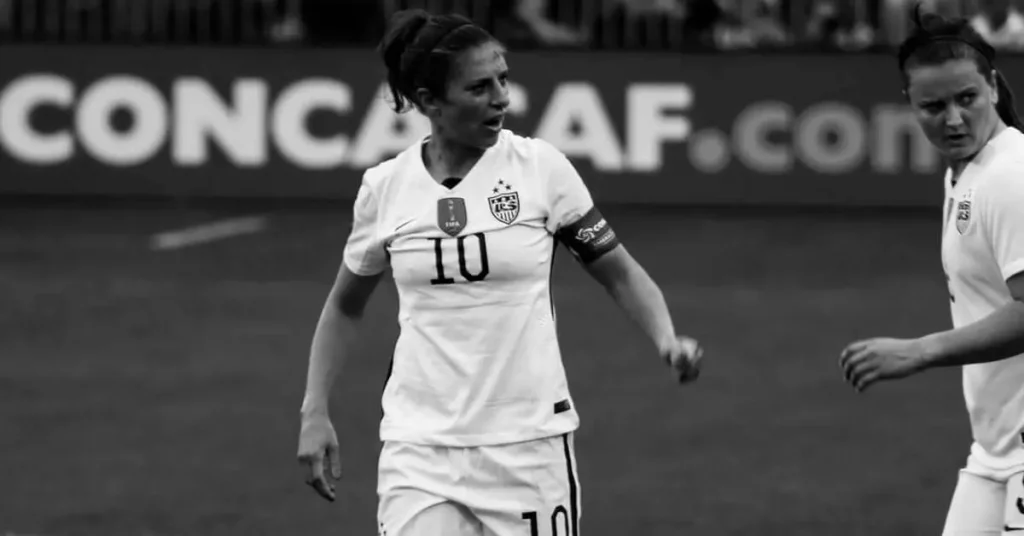Women’s soccer in England has made tremendous progress over the last 50 years. The Women’s Football Association, formed in 1969, organized the first women’s national competition. It was called The Mitre Trophy for the 1970-71 season. This was to become the first Women’s FA Cup Final.
More than 50 years later, the national knockout cup has spectator attendances over 45,000 and is televised live on BBC One throughout the world.
Structure Of Women’s Football Game
Our knowledge of the structures of women’s soccer before the 1960s is minimal. Although there had been various ventures to promote fixtures in the 1890s, it was not until the First World War that soccer gained any firm foothold amongst women.
This coincided with the mass entry of women into the labor market to assist the war effort. From this, teams of ‘munitionettes’ were formed in many towns and cities throughout the country.
Most played matches to raise funds for war charities. In the North East of England, a knockout competition was played in 1917-18 and 1918-19. However, the first competition for women footballers was probably the Manchester and District Ladies’ Football League, established in the summer of 1917.
Its membership was drawn from “the various great commercial undertakings within a radius of ten miles of Manchester.” The league applied for affiliation to the Football Association but was rejected.
In the 1920s, after a ban on women’s soccer was imposed, an English Ladies’ Football Association was formed. A national cup competition took place in 1922, won by Stoke Ladies, who defeated Doncaster & Bentley in the final. The same year Hey’s Ladies of Bradford won the Bradford Charity Cup.
Formal competitive soccer seems to have had a minimal presence over the next 20 years or so. Still, there was a Kent Ladies Football League in 1944-45, won by Aylesham Ladies from Snowdown Colliery. In 1950-51 a Southern Counties Ladies Football League was started. Both were probably fairly short-lasting ventures.
The Catalyst
While these first two periods of competitive football arose out of the two world wars, the third and longest-lasting, developed from the mid-1960s. The England victory in the 1966 World Cup proved to be the catalyst for a dramatic renaissance in the women’s game.
A Southampton & District League, principally comprising works’ teams, was launched in September 1966. The following season, a Warwickshire League was started, and other leagues soon followed. However, England’s World Cup success in 1966 does not explain why women’s soccer re-emerged all over Europe around the same time.
By the late 1960s, the most advanced developments were in Czechoslovakia and Italy. England, along with the Netherlands, where an association (the ANDVB) was also established in 1969, was behind these other countries.
The Deal Tournament
In 1967 Arthur Hobbs organized a soccer tournament for local clubs in Kent, the matches taking place at Betteshanger Colliery Welfare ground. The following year the Deal Tournament attracted entries from around the country, and by 1969 there were 52 entries, including teams from Czechoslovakia and Austria.
At this time, English women’s football was still regarded as unaffiliated football by the Football Association. At least some of the games that year were played on pitches with rugby goal posts as the organizing body found it challenging to locate soccer fields.
Hobbs also ran a team, Deal & Betteshanger United. They were members of the East Kent League, established around 1968. At the end of the 1969 Deal Tournament, Hobbs announced his intention to develop a ladies’ football association, and in November of that year, a Steering Committee met for the first time.
The original working title was the Ladies’ Football Association of Great Britain, but early in 1970, this was changed to the Women’s Football Association of Great Britain. In addition, it was proposed to extend the geographical area to cover the British Isles (including the Irish Republic). However, it does not appear to have been agreed upon by the committee.
The Resurgence
The (male) Football Association responded favorably to the resurgence in the women’s game. In December 1969, began a consultation process which quickly led to the lifting of the ban on women’s teams using grounds owned by affiliated clubs.
Women’s soccer would no longer be regarded as unaffiliated. However, the ban imposed by the SFA continued in Scotland, although teams could use grounds of Scottish Junior FA clubs, as was often the case. The Deal Tournament was not the only national tournament as Butlin’s had also established the Butlin’s Cup in association with ITV and the Daily Mirror.
Games were played at Butlin’s holiday camps during the summer months with national finals for England and Scotland. The winners playing off to decide the ‘International’ champions. This ran in both 1969 and 1970.
In June 1970, the Women’s Football Association held its first Annual General Meeting, and during this, the introduction of a knockout competition for members, the Mitre Trophy (now known as the first women’s FA Cup Final) was announced.
Mitre Trophy Final (First Women’s FA Cup Final)
There had been considerable planning put into this as the dates and venues for the quarter-finals, semi-finals, and final were already in place. By the start of the 1970-71 season, there was a network of leagues operating throughout England, with the main exceptions being the North East and South West.
The most significant development was in the Midlands and Home Counties.
Five separate teams from Luton were competing in leagues (Arland, Chiltern Valley, Daytel, Farley United, and Luton Ladies). Leagues are known to exist include East Midlands Alliance, Heart of England, Home Counties, Hull, Kent, Midlands, North West, Oxfordshire, South and East of England, Southampton, Sussex, and West Mercian.
All players were amateurs, and teams operated similarly to male recreational football clubs, training for one or two evenings a week and paying a regular subscription plus a match fee to play. Players provided their soccer jerseys and often paid their own travel and hotel bills.
Stewarton And Thistle
Scottish club team Stewarton Thistle (now known as Kilmarnock FC Women) raised funds for their long-distance journeys to the south of England by obtaining sponsorship from local businesses, Irvine Valley Round Table, local Junior FA clubs, and Stewarton Town Council. In addition, they received support from Lees’ confectionary firm in 1971-72 season, changing their name to Lees’ Ladies.
The Mitre Trophy (sometimes called the ‘British Isles Trophy’) was designed as a knockout competition along the lines of the male FA and Scottish Cups. Matches were 40 minutes each way, and the teams were divided into eight regional areas, each providing a quarter-finalist.
As most of the 71 entries came from the South and Midlands of England, this produced a distorted picture of the strength of the women’s game. However, the powerful teams from the North West of England and Scotland were all placed in the same group.
Thus Stewarton Thistle played and beat Manchester Corinthians (who had won the Deal Tournament in 1968 and 1969) in the northern area final.
The remaining seven quarter-finalists comprised three teams from the Midlands League (Emgals of Leicester, Kay’s of Worcester and Wanderers of Nuneaton), plus Amersham Angels (Home Counties League), Thanet United (Kent League), White Ribbon of London (South and East of England League) and Southampton.
Is It A Club?
The Southampton entry was a representative side from the Southampton & District League. However, it was only after questions were raised about their status that this was regularised in December 1970 (presumably by the formal establishment of a club).
The quarter-finals and semi-finals for the first women’s FA cup were held as part of a one-day tournament at Woodside Stadium, Watford, a local authority venue.
The day was notable because Rose Reilly, probably the best British player of her generation, netted six goals for Stewarton Thistle in a 9-2 rout of Wanderers (Nuneaton) in their semi-final tie before being rushed to hospital with suspected appendicitis.
The Mitre Trophy Winners
Southampton won their quarter-final against White Ribbon 23-0 and the semi-final with Emgals 8-0. However, there seems to have been a general dissatisfaction that the Southampton team was effectively a representative side.
A report from Amersham Angels noted: “Many spectators expressed the view that a representative side should not have been allowed in the competition.”
The Wanderers of Nuneaton complained that the second half of their semi-final against Stewarton Thistle lasted an hour and a half instead of 40 minutes. The finals were held at the Crystal Palace National Sports Centre. This is the same site as the men’s FA Cup finals had between 1895 and 1914.
Emgals of Leicester defeated Wanderers of Nuneaton to win the battle for third place, while Southampton won the ‘First Mitre Trophy’ 4-1 with their ability to control Rose Reilly, proving decisive.
The prolific Pat Davies scored a hat-trick. The final received no national press coverage, although reports appear in the local papers for the two participant clubs. The weekly magazine Goal carried a two-page picture spread of the match (‘The Girls have their own women’s FA Cup Final’), but this did not appear until several weeks later.
Southampton were not popular winners and even criticized in their local paper, the Southern Evening Echo, shortly before the final. Pat Dunn of Weyladies (Weymouth) was quoted as saying, “This final is a farce … It’s desperately unfair to women’s soccer throughout the country, and many people agree with me.
We shall be cheering for the Scots all the way, hoping to see Southampton taken down a few pegs. They deserve it, for they are not a club team.”
Women’s Football Association (WFA)
Dunn claimed to have the backing of June Batt, secretary of Chiltern Valley, and that several complaints had been submitted to the Women’s FA over the matter. The Mitre Trophy was an essential part of Arthur Hobbs’ plan to legitimize the women’s game under the control of the Women’s FA.
He was, of course, following the tried and tested example from the men’s game. The FA Cup competition had been a critical element in ensuring that the Football Association controlled the game from London, pushing aside the Sheffield and Glasgow-based associations.
By the summer of 1971, Hobbs had persuaded the Football Association, the Sports Council, the Central Council of Physical Recreation (CCPR), and the Department of the Environment to recognize the Women’s FA as the supreme body for women’s soccer in the UK.
A national knockout competition, recognition from the Football Association and other sporting authorities, a national team, and the ability to exclude unaffiliated players, clubs, and competitions were the cornerstones that allowed the Women’s FA to become the sole regulatory body for women’s soccer in England.
Finance, however, was another matter, and this was the main reason why control of women’s soccer passed over to the Football Association at the end of 1993.
Women’s FA Cup Records
Since the First Women’s FA Cup Final (The Mitre Trophy) in 1970-71, Southampton has won the Women’s FA Cup eight times and has been the runners-up twice. Arsenal Football Club has won the Mitre Trophy/FA Cup Final a record 14 times. Doncaster Belles have won it six times and been runners-up seven times.
The first women’s FA Cup final held at Wembley stadium was in the 2014/15 season. Chelsea Football Club beat Notts County 1-0 in front of 30,710 spectators. Before this first Wembley game, the yearly women’s FA Cup finals had been held at 30 different venues around the country.
A Brief History
- 1971: Southampton Women’s defeated Stewarton Thistle 4-1 in the first Women’s FA Cup Final.
- 1971-92: It was known as the Women’s Football Association Cup or more colloquially as the Women’s FA Cup until 1992–93.
- 1979: According to the FA Women’s football yearbook, the original Mitre Challenge Trophy “disappeared” in 1979. With the donation of a new trophy by the Football Association, the cup was replaced.
- 1993: The WFA National Cup competition becomes the Women’s FA Challenge Cup and is controlled by the FA. [1] There are 137 teams participating.
- 2014: The venue for the FA women’s cup was announced as Wembley stadium for all future finals, just like the men’s FA Cup final.
- 2015: The Women’s FA Cup was officially renamed.
- 2020: Vitality Health and Life Insurance is the new sponsor of the Women’s FA Cup. The tournament is now known as the Vitality Women’s FA Cup.
FA Women’s Cup Winners
- Arsenal – 14
- Southampton Women’s – 8
- Doncaster Belles – 6
- Everton (Lasowe Pacific) – 3
- Charlton Athletic (Croydon) – 3
- Manchester City – 3
- Milwall Lionesses – 2
- Fulham – 2
- Howbury Grange – 1
- Birmingham City – 1
- St Helens – 1
- Friends of Fulham – 1
- Norwich City – 1
- Queens Park Rangers – 1
- Fodens – 1
- Lowestoft Ladies – 1
References:
[1]: https://www.thefa.com/womens-girls-football/history
Images:
www.theguardian.com/football/2020/apr/10/sir-denis-follows-the-man-who-ended-the-ban-on-women-playing-football (Main Image)
www.theguardian.com/football/2021/dec/04/lesley-lloyd-its-an-honour-to-have-won-the-first-womens-fa-cup
www.lostmediawiki.com/1976_WFA_Cup_Final_(partially_found_footage_of_football_match;_1976)
Getty Images
BBC Radio Solent
https://en.wikipedia.org/wiki/File:FA_Cup_Final_2014_Wembley_stadium.jpg
